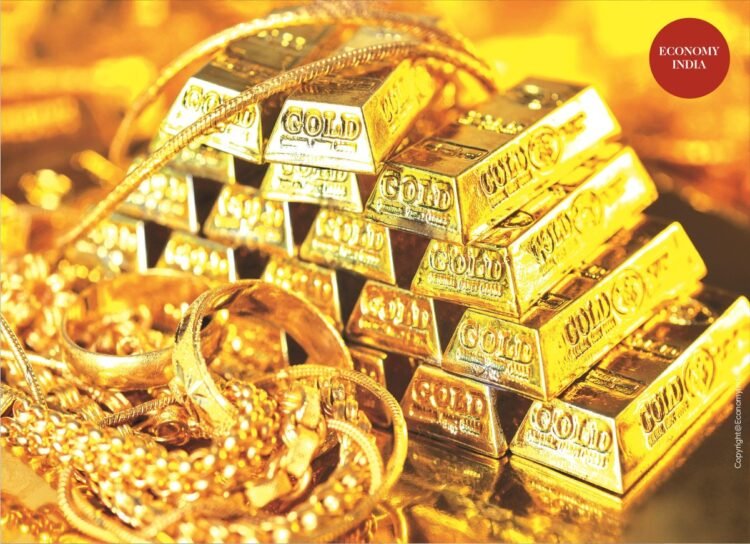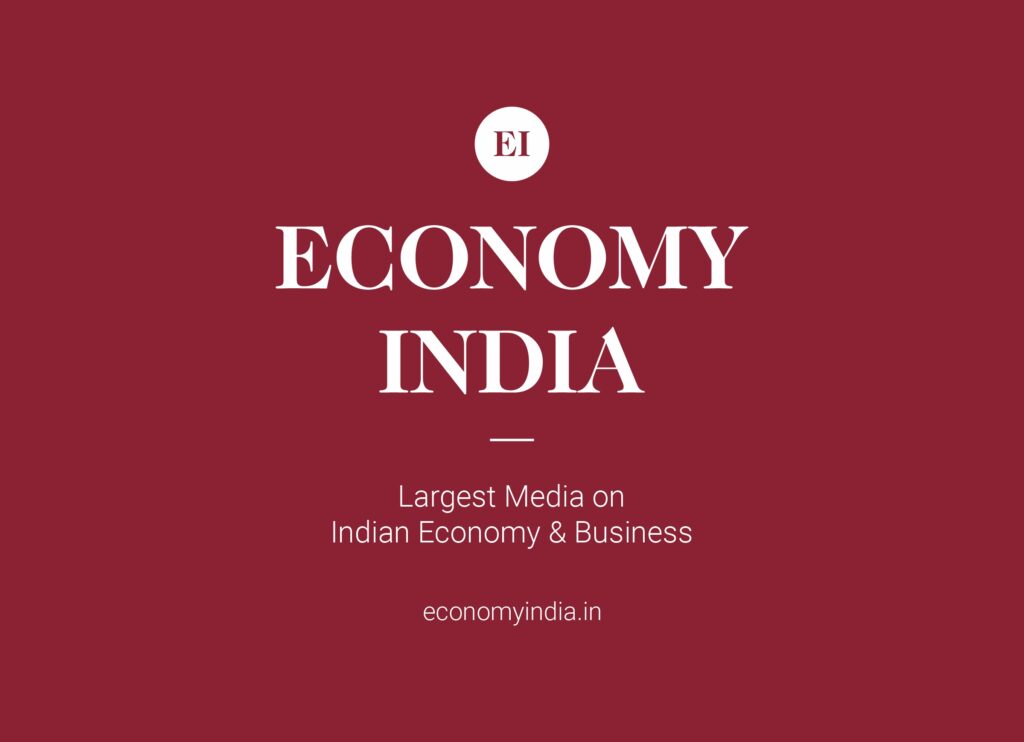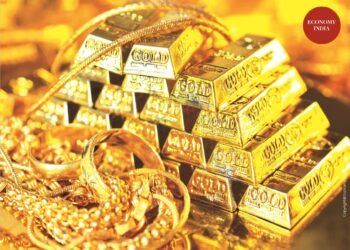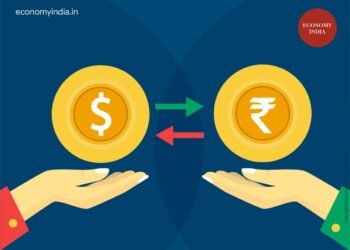Gold prices have seen a sharp fall post-Diwali, slipping ₹5,677 from record highs, while silver is down ₹25,000 per kilogram. The correction reflects cooling festive demand, easing global uncertainty, and technical profit-taking — but experts believe the long-term outlook remains bullish.
New Delhi Economy India (Economy India): Just days after glittering record highs this Diwali, India’s gold and silver markets are witnessing a significant pullback. The price of gold, which touched an all-time high of ₹1,29,584 per 10 grams on October 17, has tumbled ₹5,677 to settle at ₹1,23,907, according to the India Bullion and Jewellers Association (IBJA).
Silver, which soared to a historic ₹1,78,100 per kg on October 14, has seen an even steeper fall of ₹25,599, currently trading at ₹1,52,501. For retail buyers and investors, the reversal has raised questions: What triggered this sharp correction — and is it temporary or a deeper trend shift?
India’s Love for Gold: An Emotional and Economic Story
India remains one of the world’s largest consumers of gold, accounting for roughly 25% of global demand. Gold in Indian culture is more than just a metal — it’s a symbol of prosperity, security, and emotional value.
During festive seasons like Dhanteras, Diwali, and the wedding months, demand traditionally peaks. The rush of buying during October had pushed prices to unprecedented levels — but with the festivities over, the typical post-season slowdown has arrived.
“Every year, we see prices rise before Diwali due to strong jewelry demand and then soften afterward as consumer buying slows,” says Suresh Hundia, former president of the Bombay Bullion Association. “This year, the correction is more pronounced because the rally before Diwali was exceptionally sharp.”
Post-Diwali Cool-Off: Demand Takes a Breather
In cities like Mumbai, Delhi, and Chennai, jewelers have reported a noticeable drop in footfall since the end of the festival season. “After record pre-Diwali sales, buyers are waiting for prices to stabilize,” says Rajesh Khosla, Chairman of MMTC-PAMP India.
Analysts point out that while festive demand has cooled, long-term fundamentals remain strong due to high inflation, geopolitical risk, and central bank gold buying worldwide.
Global Drivers: A Calm Between Trade Storms
Beyond India’s seasonal patterns, the international environment has played a key role in recent price shifts. Gold, often viewed as a “safe-haven asset,” tends to surge during times of geopolitical tension or economic instability.
In October, easing US-China trade tensions after an announcement of upcoming talks between Presidents Donald Trump and Xi Jinping helped reduce global uncertainty. Investors consequently rotated funds from gold and silver back into equities and risk assets.
“Gold’s fall has less to do with fundamentals and more with improved risk appetite globally,” explains Anuj Gupta, Head of Commodities at HDFC Securities. “With markets stabilizing, traders are booking profits in gold and moving back to equities.”
The Technical Side: Overbought Signals Triggered Selling
From a market mechanics perspective, the correction was also expected. Technical indicators such as the Relative Strength Index (RSI) had shown that both gold and silver were in the “overbought” zone, suggesting prices had risen too fast, too soon.
“When RSI and momentum indicators flash red, short-term traders and algorithmic desks begin to take profits,” says Amit Khare, Senior Technical Analyst at CapitalVia Global Research. “That’s exactly what happened here — it’s a healthy pullback, not a collapse.”
Silver’s Slide: The Industrial Angle
Silver’s recent performance has been even more volatile than gold’s. Often dubbed “poor man’s gold,” silver carries a dual identity — part precious metal, part industrial commodity. Its prices are influenced by both jewelry demand and sectors like electronics, solar energy, and electric vehicles.
While silver has benefited from optimism around green technologies, short-term demand from industrial consumers has softened, especially in China. This, coupled with speculative long positions being unwound, led to a sharper fall.
“Silver’s volatility is twice that of gold,” notes Ajay Kedia, Director at Kedia Commodities. “When gold corrects by 3–4%, silver can easily drop by 6–8%. But the long-term industrial story remains intact.”
How 2025 Has Been So Far: A Rollercoaster Ride
Despite the current pullback, both metals have delivered stellar returns in 2025.
- Gold: Up ₹47,745 since December 2024, from ₹76,162 to ₹1,23,907 per 10g.
- Silver: Up ₹66,484 per kg, from ₹86,017 to ₹1,52,501.
Such strong year-to-date gains reflect a combination of inflation hedging, central bank purchases, and currency depreciation. According to the World Gold Council, global gold demand from central banks surged in the first half of 2025 as emerging markets diversified away from the US dollar.
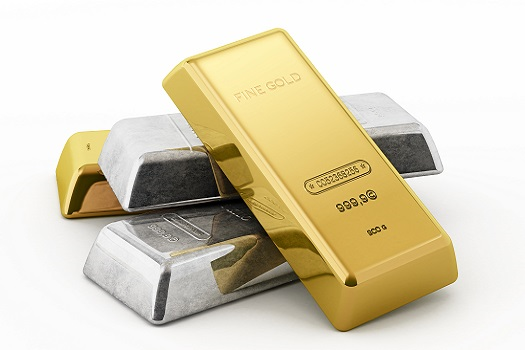
The Investor Perspective: Caution and Opportunity
For investors, the recent correction presents both risks and opportunities. Short-term traders may view it as a sign of market weakness, but long-term investors see it as a healthy entry point.
“Corrections like these are a gift,” says Devansh Modi, a bullion trader in Ahmedabad. “Gold at ₹1.23 lakh looks expensive compared to last year, but relative to global inflation and uncertain equity markets, it’s still a solid hedge.”
Experts advise maintaining a 10–15% allocation to gold in diversified portfolios, particularly in an era of currency volatility and rising geopolitical tensions.
What Buyers Should Remember: Certified and Verified Gold
Retail consumers should remain cautious while purchasing physical gold. The Bureau of Indian Standards (BIS) hallmark ensures purity.
Checklist for Buyers:
- Always look for the BIS Hallmark, with a unique alphanumeric code (e.g., AZ4524).
- Cross-check live prices on official sources like the IBJA website or trusted jeweler apps.
- Understand the difference between 24K, 22K, and 18K purity levels.
“People often ignore small price variations, but purity and certification make a huge difference in resale value,” says Manisha Mehta, a Mumbai-based jewelry consultant.
Macro Trends: What Lies Ahead
While short-term volatility may persist, most economists believe the structural drivers for gold and silver remain strong.
- Central Banks Continue Buying: Emerging markets like China and India have increased their gold reserves to mitigate dollar exposure.
- Global Inflation Uncertainty: Even as inflation cools, sticky core prices and oil volatility keep investors cautious.
- Weakening Currencies: A gradual weakening of Asian currencies, including the Indian rupee, makes imported gold more expensive, supporting local prices.
- Rising Industrial Demand for Silver: As renewable energy projects expand, silver’s use in solar panels and EV batteries could underpin future demand.
Expert Forecasts for 2026
| Expert | Position | 2026 Gold Forecast | 2026 Silver Forecast |
|---|---|---|---|
| Motilal Oswal Research | Commodity Strategy | ₹1,35,000/10g | ₹1,80,000/kg |
| ICICI Direct | Research Desk | ₹1,32,000/10g | ₹1,70,000/kg |
| HDFC Securities | Commodity Division | ₹1,38,000/10g | ₹1,90,000/kg |
“The current correction is an opportunity for long-term accumulation,” says Ravindra Rao, Head of Commodity Research at Kotak Securities. “India’s macro story and the global push for green technologies will keep silver in strong demand over the next decade.”
A Pause, Not a Panic
The decline in gold and silver prices post-Diwali is not the end of the precious metals rally — it’s a moment of pause. As markets recalibrate after a record run, investors are reminded that volatility is a natural part of any bull market.
India’s long-standing love affair with gold continues, and with silver emerging as a “green metal” of the future, both assets are likely to shine again — perhaps even brighter in 2026.
(Economy India)

